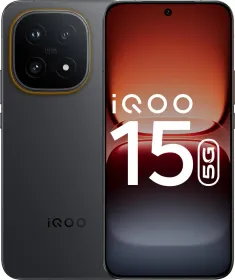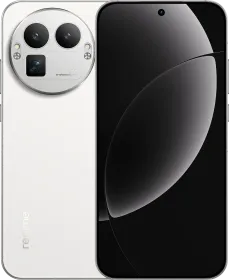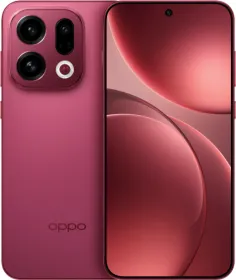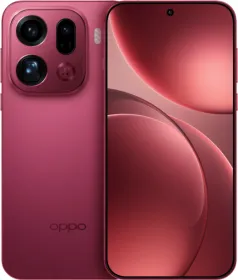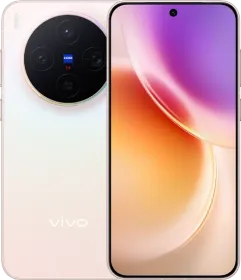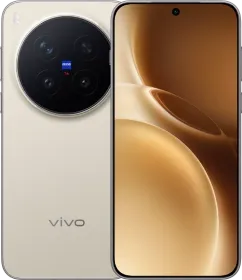The iQOO 15 approaches the flagship space with a familiar intention. Deliver reliable performance, strong gaming hardware, and meaningful upgrades in areas where earlier iQOO phones showed gaps. After spending several days with this phone, the approach is clear. iQOO has stuck to its formula but tightened areas that needed work.
The phone still prioritizes raw performance, display, battery, and gaming, but the improvements in camera output and software refinement give this model a more rounded feel than earlier iQOO flagships. The question now is whether these upgrades are enough to hold its own against the competition. Let’s find out in this review.
iQOO 15 Price & Availability
The iQOO 15 starts at ₹72,999 for the 12 GB + 256 GB model. The higher configuration with 16 GB + 512 GB that I have been testing comes in at ₹79,999. There’s a ₹7,000 bank discount plus a ₹1,000 coupon available for the first sale.
The phone comes in two finishes. The Alpha variant uses a dark fiberglass back, and the Legend variant which switches to white glass. Both are available across Amazon, iQOO e-store, and offline channels.
Pros
- Excellent performance from Snapdragon 8 Elite Gen 5
- Stable 120 FPS gaming with great thermals
- Great portraits
- 7,000 mAh battery with strong real-world endurance
- 100W fast charging with USB-C charger inside the box
- 2K M14 LEAD OLED display with excellent brightness
- Ultrasonic fingerprint scanner is fast and reliable
- Loud symmetrical speakers
- USB 3.2 Gen 1 port
- 5 OS + 7 years of security updates
Cons
- Asymmetrical bezels with a chin
- Long-range telephoto processing inconsistent
- Indoor videos show noise
- No telemacro support
- No 40W wireless charger sold in India
iQOO 15 Specifications
- Display: 6.85-inch M14 LEAD OLED, 2K (1440 × 3168), 144 Hz refresh rate, 2,600 Nits HBM brightness, 6,000 Nits peak brightness, Dolby Vision, 2160 Hz PWM, flat panel
- SoC: Snapdragon 8 Elite Gen 5 (Oryon CPU cluster 2 x 4.6 GHz Oryon V3 Phoenix L + 6 x 3.62 GHz Oryon V3 Phoenix M, Adreno 840 GPU, 4 nm)
- RAM: 12 GB / 16 GB LPDDR5X
- Storage: 256 GB / 512 GB UFS 4.1
- Main Camera: 50 MP IMX921, 1/1.56-inch, f/1.88, OIS, AF, 8K30, 4K30/60
- Ultra-wide Camera: 50 MP JN1, 1/2.76-inch, f/2.05, AF, 119°, 4K30/60
- Telephoto Camera: 50 MP Sony IMX882, 1/1.95-inch, f/2.65, 3X optical, OIS, 100X digital, 4K30/60, 65 cm MFD
- Front Camera: 32 MP GalaxyCore sensor, 1/3.1-inch, f/2.45, 21 mm, 4K30/60
- Battery: 7,000 mAh, 100W wired charging, 40W wireless charging
- Build: Glass back (Legend), fiberglass back (Black), IP68/69, aluminum frame
- Connectivity: Wi-Fi 7, Bluetooth 5.4, NFC, USB 3.2 Gen 1 Type-C
- Biometrics: Ultrasonic in-display fingerprint, face unlock
- Audio: Dual symmetrical stereo speakers
- Dimensions and Weight: 163.7 x 76.8 x 8.17 mm; 216g (Alpha), 220g (Legend)
iQOO 15 Review: Design and Build

The design language of the iQOO 15 is familiar. It follows the rounded rectangle frame and the curved housing around the camera layout that we have seen since the iQOO 12. The changes are subtle. The edges are flatter, the corners are softer, and the frame fits better in hand with a more stable grip.

The Legend color (white) uses proper glass on the back, and the surface has a clean and uniform finish. The Alpha variant (black) uses fiberglass, but the Legend edition is clearly the more premium of the two.

The camera module is large and sits on the top left corner without too much wobble. The phone weighs slightly less than I expected when I first held it, and the weight distribution is balanced despite the large 7,000 mAh battery inside.
The weight sits at 220 grams for Legend and 216 grams for Alpha Black, and the thickness is 8.17 mm on both the Legend and Alpha versions. The in-hand feel is better than the iQOO 13 because the curves are more controlled and the flat sides give the phone a more planted feel during gaming.
It is not a bezel minimisation showcase like the OnePlus 15 or the vivo X300 lineup. The bottom chin is slightly thicker and the bezels are not as tight on all sides. It is not distracting, but those who care about perfectly symmetrical bezels will notice the difference. Still, the front looks modern and the Legend variant has a premium finish that is hard to complain about at this price.

The ports and buttons are aligned well and iQOO includes a USB 3.2 port, which is a major advantage over phones like the realme GT 8 Pro and the Find X9. This matters for data transfer, wired capture and general versatility. The frame is solid with no flex under pressure and the buttons have good tactility. The phone is certified for IP68 and IP69 water and dust protection.
The Monster Halo lighting returns, although iQOO has shifted it from an exposed element to a concealed light strip beneath the camera ring. It glows through the material with a softer effect and activates during calls, notifications, gaming events, or charging.
iQOO 15 Review: Display

The iQOO 15 uses what the company calls its M14 2K+ 144 Hz Ultra Bright Display, and this panel is one of the biggest upgrades on the device. It is a 6.85 inch flat M14 AMOLED screen with an LTPO backplane, capable of shifting anywhere between 1 Hz and 144 Hz depending on the content (though UI remains 120 Hz).
Brightness is a major talking point. The phone reaches up to 6,000 Nits of local peak brightness and 2,600 Nits HBM. In real-world use, this translates into excellent outdoor visibility. The display looks bright even in harsh afternoon sunlight, and maintains legibility without washing out.

The triple ambient light sensor system also makes a difference. The additional top sensor shortens the adjustment time, helping the phone react to changing lighting conditions faster than traditional dual-sensor setups. This is especially noticeable when walking out of a dim space into bright sunlight.
The color rendering feels balanced after switching to the Professional profile. Motion performance is excellent as well. The display uses an 8T circuit design to reduce motion blur. Touch response is equally refined.
The panel has enhanced touch algorithms to prevent accidental inputs, and the wet finger performance is reliable. Even during light rain or after washing hands, you can use the phone without a lot of issues.

Eye comfort is another area where iQOO put in visible work. The phone uses hardware-level protection through its new pol-less display technology, reducing reflections and improving clarity under different lighting angles. PWM dimming is rated at 2160 Hz, and you also get 1 Pulse DC dimming for extremely low brightness conditions.
These additions make late-night usage easier on the eyes, and the screen can drop to very low luminance levels without the flicker you’d notice on some displays. The panel is TÜV Rheinland Full Care Display certified and supports circular polarization for better visibility with sunglasses.
Dolby Vision support is also present. Additionally, the iQOO 15 features a pre-applied anti-reflective membrane on the screen which helps cut reflections by a bit. Here’s a comparison with the OnePlus 15 (right) which does not have this feature.

Overall, the display on the iQOO 15 delivers a well-rounded experience. The combination of LTPO, 2K resolution, very high brightness, strong touch accuracy, and meaningful eye comfort improvements make it one of the best in the market right now. The bezels are not as symmetrical or as slim as the OnePlus 15 or the vivo X300 series, but the quality of the panel itself is undeniably strong.
iQOO 15 Review: Speakers and Haptics

The speakers on the iQOO 15 are loud. They are actually among the loudest I have used this year. The phone pushes significant volume without cracking at higher levels and the stereo separation is clear.
The tuning needs refinement though. The bass does not have the density that you get on the OnePlus 15 or even the GT 8 Pro, and the mids need refinement too. For gaming they work well because they create intensity and the directional cues stay clear.

Haptics are very strong. The vibration motor is powerful and the level of strength easily beats the implementation on the OnePlus 15. However, the integration still needs work.
Several UI elements lack any haptic feedback, such as the volume and brightness slider, “Clear” button for notifications, opening/closing the sidebar, expanding stacked notifications, or when switching lenses/ tapping zoom levels in the camera app.
Still, the overall haptics here are good and feel premium.
iQOO 15 Review: Software

The iQOO 15 runs OriginOS 6 in India and the experience is largely positive. It is smoother than the older versions and there is more consistency across the interface. Transitions feel lighter and the app switcher is fast.
However, there are still some minor jitters throughout the UI. These are not heavy stutters, but small drops that happen randomly and break the otherwise smooth experience. iQOO needs to address these.

The design layer is a mix of clean and slightly playful elements. The Roboto font in some UI elements, like inside the charging animation does not fit the rest of the system and feels unfinished.

Lock screen customisation is excellent. You can add lock screen widgets, set depth effects, and even configure different clock styles. The Flip Card feature is also here, which uses your phone’s gyro to “flip” wallpapers as you tilt the phone. Homescreen options are more limited here compared to the Chinese build, though.
The phone also brings Origin Island that surfaces live information similar to the Dynamic Island on iOS. You get real-time updates for food delivery, music playback, hotspot activity, timers and similar system events.
There is a full-screen Always-On Display, and the music lock-screen looks quite similar to what you see on iOS. You can keep the full-screen AOD enabled at all times, and the transition from the lock screen to the AOD is smooth.

The overall software stability is strong on the iQOO 15. The phone handles multitasking, camera switching, editing, gaming, and network tasks without rough edges. As it stands, the software is good but not as smooth as the OnePlus 15’s.
There is some bloatware and not everything can be removed, like the V-AppStore or the Browser app. I’ve also noticed a play store app scanning full-page ads on my unit, which is an inconvenience.

Office Kit, device controls, and smart panels are all part of the package. You can use the iQOO DocMaster to open all kinds of PDFs, PPTs, and more, and also review them using the AI Creation feature, allowing you to summarize, polish, shorten, expand, extract to-dos, brainstorm, translate the document, and more. All these features are also available in the Notes app.

Speaking of which, the iQOO 15 also comes packed with some AI features with OriginOS 6. Within the Albums app, you have AI Erase, AI UHD, and AI Image Expander, alongside AI Color Adjustment. All these features work well, though I wish we had more AI features. The Recorder app can transcribe and voice summarise recordings.

The recommendations panel works based on app behaviour and suggests actions or shortcuts. AI image enhancement inside the camera is available, but even when you disable the AI telephoto enhancement toggle, you can still feel some AI push in the images.
ALSO READ: OriginOS 6 Review: The Upgrade That Changes Everything for vivo
The iQOO 15 also comes with AI Visual modes for the four season filters in the Portrait mode. This allows you to use AI to transform your image into a different season. It requires cloud processing and takes a few seconds before the final image appears.



The iQOO 15 now comes with a long-term update promise, with 5 years of OS updates and 7 years of security updates. It is one of the most extended support cycles in this segment, and it puts iQOO in a position where software longevity is not a compromise at all.
With OriginOS 6, the overall experience feels more stable and coherent than older versions. The UI still has its quirks and occasional jitters, but the day-to-day usability has improved enough that software is no longer a hesitation point for potential buyers. You can now approach an iQOO flagship with confidence that the software will be maintained for the long run.
iQOO 15 Review: Biometrics

The ultrasonic fingerprint scanner in the iQOO 15 is excellent. Registration is extremely quick. You simply rest your finger and roll it around and the phone completes the scan in about one second. Unlock speeds are fast and reliable. Even with slightly damp fingers, the scanner reads accurately.
Face unlock is fast but standard in terms of security. The fingerprint scanner is the preferred method because it is consistent and works better with app locks and payment verification.
iQOO 15 Review: Performance

The iQOO 15 runs on the Snapdragon 8 Elite Gen 5, with LPDDR5X RAM and UFS 4.1 storage. The difference is noticeable. Animations load faster, apps retain more background memory, and the overall responsiveness feels several steps ahead of the iQOO 13. You can push the device into heavy multitasking without worrying about reloads because the 16 GB RAM variant I’m using holds apps with great consistency.
Synthetic benchmarks reflect that capability well. The phone comfortably crosses the high-end threshold in Geekbench and AnTuTu, and even though synthetic numbers never tell the full story, they reveal how far Qualcomm has come with its new Oryon cores. Here are the benchmark results:
| Benchmark Test | Score / Result |
| AnTuTu v11.0.4 | 3,802,464 |
| AnTuTu Storage Test | 143,770; Sequential Read: 3781 MB/s; Sequential Write: 3454 MB/s |
| Geekbench 6 (CPU) | Single-Core: 3532; Multi-Core: 9993 |
| Geekbench 6 (GPU – OpenCL) | 23,942 |
| Geekbench 6 (GPU – Vulkan) | 27,067 |
| 3DMark Wild Life Extreme Test | Score: 7191; Average FPS: 43.06 |
| 3DMark Wild Life Extreme Stress Test | Best Loop: 7042; Lowest Loop: 3390; Stability: 48.1% |
Day-to-day use also highlights that architecture efficiency. Animations rarely stutter unless you catch OriginOS 6 during one of those intermittent UI jitters that need ironing out.
Thermals are handled well. The 8K vapor chamber cooling structure seems to make a real difference. I pushed the phone through extended camera testing, gaming, and back-to-back benchmarks, and the surface temperature did not get too hot.
Gaming is where the iQOO 15 shows its real power. iQOO has built a reputation around pushing games far beyond their default limits, and the 15 maintains that identity. The key here is how well frame interpolation, resolution boosting, and touch response combine with the Snapdragon 8 Elite Gen 5.
BGMI runs at 120 FPS without dropping frames or triggering thermal spikes. When you enable the Q3 features like Frame Boost, the overall smoothness gets better, but the device starts to heat up quicker. You can boost Genshin Impact to 120 FPS as well, and although that introduces additional heat, the device does not jump into the overheating temperatures (we could not record the virtual frames in our stats).


Wuthering Waves maintain a stable 60 FPS, even with effects-heavy sequences. The ray tracing implementation in Genshin also works well. The reflections and shadows look better, and it adds depth to some areas of the game.


The limitation is that you cannot combine ray tracing with the other Q3 visual enhancements. You need to choose between the two, which is understandable given the additional GPU load.

Overheating issues are almost nonexistent, and iQOO’s thermal envelope feels very stable. Compared to the OnePlus 15, the performance is slightly more modest, but it’s enough for most gamers.
iQOO 15 Review: Cameras

The camera system on the iQOO 15 is a meaningful step up from the iQOO 13. The setup includes a 50 MP 1/1.56-inch main camera, a 50 MP 1/2.76-inch ultrawide, and a 50 MP 1/1.95-inch 3X telephoto lens. On paper it looks competitive, especially with the new 50 MP 3X periscope.
(Note: We are still updating the review with camera samples. Please check back later.)
Main Camera
Daylight photos from the main sensor look good. Details are strong and the colors are well-controlled once you switch from the default Vivid profile to Natural or Textured. These two profiles produce the most balanced results.
The dynamic range is handled well in most scenes, though you may notice the processing struggle with very bright highlights. The shutter is fast, but the processing pipeline takes time. Thus, the viewfinder can appear blurry because the image is still being computed in the background.
Low light performance on the main camera is fine, although certain scenes reveal noise in the shadows and the occasional over-lifted exposure. Night mode kicks in automatically. Overall though, the low light performance is acceptable and here are some samples you can check out.
50 MP 3X Telephoto
The 3X telephoto performs well when the lighting is solid and the distance matches its focusing requirements. If you are within 75 cm of a subject or in lower light conditions, the phone simply crops from the main camera instead of using the telephoto sensor. Otherwise, it uses the 3X and the image characteristics are similar to the main camera.
Zooming up to 6X or 10X gives mixed results. Sometimes the images work well and you get solid detail. Other times, the processing swings too far in the AI direction.
Even after disabling AI Telephoto Enhancement, the phone tends to boost edge clarity and textures aggressively, giving images a slightly digital quality. The telephoto still performs well enough for a performance-focused smartphone, and you can zoom in up to 100X if you wish.
The depth and the colors that you get with the new 3X camera is commendable, and the low light performance is also good (when the phone actually uses the 3X camera). I’ve noticed some white balance issues, but that’s not a deal-breaker.
Portraits
Portraits remain the strongest part of this camera system. With five focal lengths available, the iQOO 15 gives you flexibility and depth compression options. Skin tones are rendered well, and the background separation is clean. Although you may notice face beautification and brightening even after turning everything off.
The telephoto portraits on the iQOO 15 especially look cinematic with good edge separation and realistic blur rendering. If you are looking for a phone with great portrait photography capabilities, then the iQOO 15 is an excellent choice.
Ultra-wide
The ultrawide camera is fine but unremarkable. It does well in daylight but struggles with noise and softness during indoor or low light scenes. The colors match the main camera reasonably well, so the results stay consistent across lenses during the day.
Selfies
Selfies have improved due to the wider 21mm focal length, making group shots noticeably easier. Daylight selfies are sharp and balanced, but low light selfies remain soft, perhaps due to the lack of AF. They are usable, but not at the same level as some competing flagships.
Macros
With the iQOO 15, you get two ways to capture close-up shots. You can switch to the ultra-wide lens or use the main camera at 2X. iQOO added a Super Macro mode for this, adding artificial background blur, which can be turned off too. The phone skips telemacro, unfortunately.
Videos
Videos show a similar trend. Outdoor footage is good with vibrant colors and dynamic range. Indoors, however, iQOO needs to work on noise control, colors, and exposure transitions. Stabilization is serviceable but not class-leading. Selfie video performance is good though, and low light performance is largely acceptable.
The iQOO 15 delivers a strong portrait mode, which matters to a lot of users. Add to that the new 50 MP 3X periscope, the iQOO 15 delivers a camera experience that matters to its users. Still, there is some room for improvement, especially in the video department, but the overall camera experience is good.
iQOO 15 Review: Battery Life and Charging

Battery life has always been an iQOO strength, and the iQOO 15 continues that trend with a massive 7,000 mAh cell this time. This is one of the largest batteries you will find in any flagship right now, and the longevity shows.
With general use across social apps, YouTube, messaging, calls, camera, and light gaming, I consistently recorded anywhere between 9.5 to 11 hours of screen-on time. On heavier days that included long gaming sessions, the phone still cleared the 8-hour mark.
As for charging, the phone supports 100W FlashCharge (USB-C charger included in the box). A full charge takes about 50 to 55 minutes depending on temperature. iQOO lets you control the charging behaviour directly from the lock screen so you can slow down charging or boost it if you are in a hurry.
Wireless charging is also supported at 40W. This time, the limitation is not the phone but the ecosystem, because iQOO does not sell wireless chargers in India. If you have a compatible Qi charger, you can still enjoy wireless charging but a significantly lower speed.
Overall battery performance is one of the strongest reasons to pick this phone. It lasts long, charges quickly enough, and does not require micromanagement to stretch to the end of a heavy day.
Review Verdict: Should You Buy the iQOO 15?
After spending extensive time with the iQOO 15, it is clear that this is the most balanced phone the brand has released in years. It finally fixes many of the smaller frustrations from the previous generation while strengthening the core areas iQOO users care about, especially display, performance, battery life, software, the 50 MP periscope, and gaming.
Alternatives include the OnePlus 15 and the realme GT 8 Pro, both of which have their own set of pros and cons. Nonetheless, if you want a flagship for gaming with strong portraits, great battery life, class-leading performance, and a great display, the iQOO 15 is a good choice.

Smartprix ⭐ Rating: 8.6/10
- Design and Build: 8.7/10
- Display: 9.6/10
- Speakers: 8.4/10
- Software: 8/10
- Haptics: 8.3/10
- Biometrics: 9/10
- Performance: 9/10
- Cameras: 7.5/10
- Battery Life & Charging: 9.2/10
First reviewed in November 2025.























